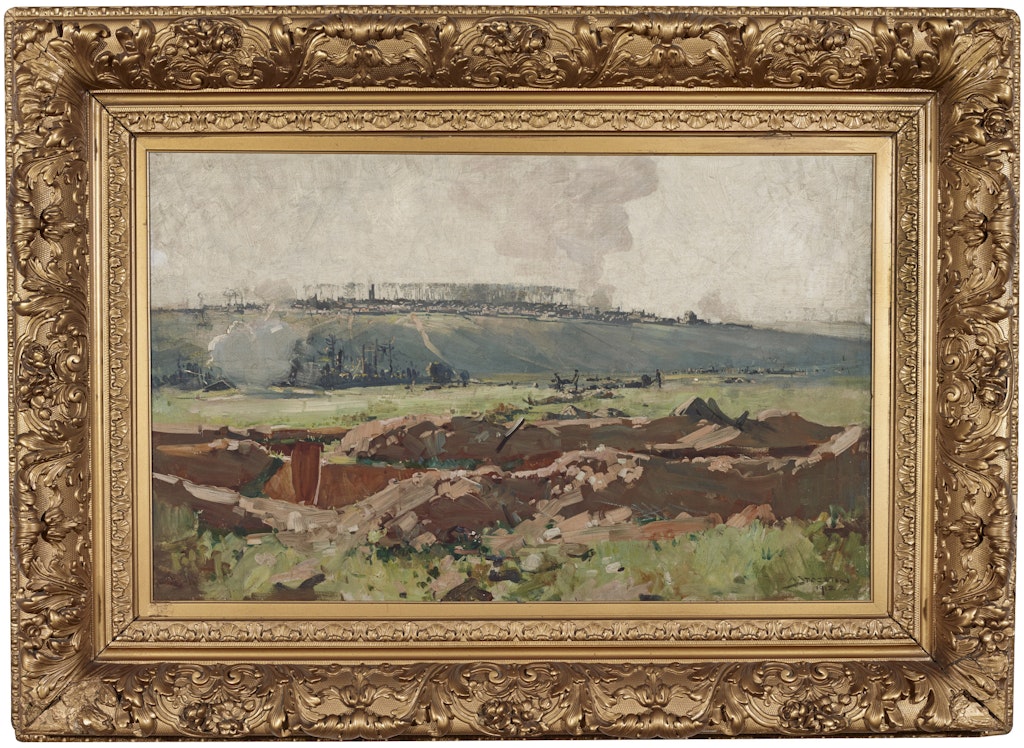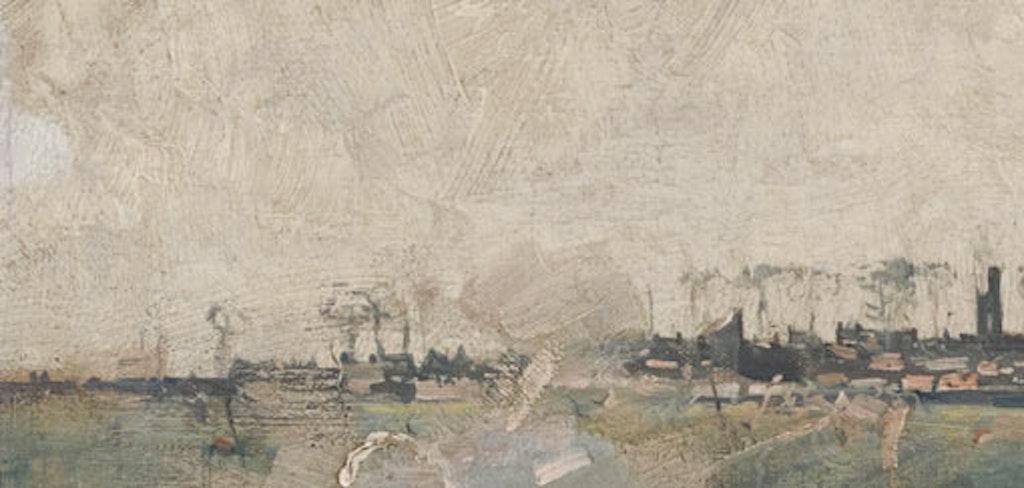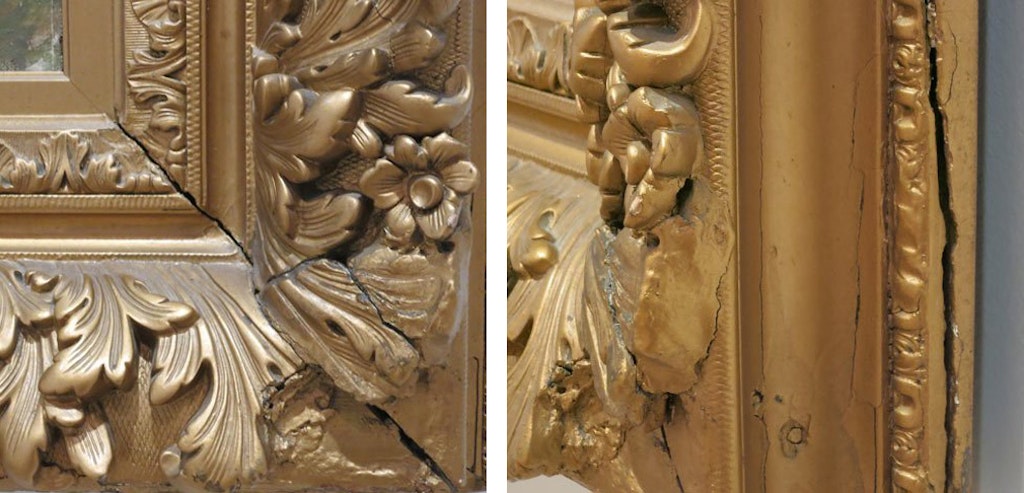Saving a Streeton

Arthur Streeton Villers-Bretonneux 1918, Art Gallery of New South Wales
Arthur Streeton is one of Australia’s best known and most influential landscape painters. In May 1918, aged 51, he was appointed an official war artist, assigned the task of creating a visual record of Australia’s armed forces in action during World War I. He travelled to Europe soon after, visiting the town of Villers-Bretonneux in the Somme region of northern France – the site of the world’s first tank-against-tank battle, which had taken place in April 1918. There, he witnessed the utter devastation that had cost lives of over 1200 Australian soldiers.
The battleground became the subject of Streeton’s important work Villers-Bretonneux 1918. The painting’s broad vista is of a landscape marked by conflict: the earth rent apart by mortar explosions, deep rows of trenches scored into fields of green and clouds of shrapnel smoke billowing across the sky. In the distance, figures can be seen bearing stretchers. The image is one of relative calm – as if the battle has been paused for the artist’s benefit.
Villers-Bretonneux is one of Streeton’s most significant works from his service as a war artist but the painting and its frame are in urgent need of conservation treatment.
The painting was acquired by the Art Gallery of NSW in 1928. By 1951, it had developed a network of raised cracks. In 1966, the canvas was attached to a hardboard support, which stabilised the painting, but there are many tiny paint losses and raised paint edges throughout the sky. A varnish applied in 1966 has darkened so that the colours no longer appear as the artist intended.

The Gallery’s head of frames conservation, Margaret Sawicki, has investigated the condition of the frame. Originally gilded with gold leaf using water- and oil-gilding techniques, the frame has been painted over with dull brass-based paint. Severe damage is clearly apparent, with severe loss of ornaments and some areas of older damage crudely filled and painted. White gesso and bare wood are exposed in other areas, indicating the weakness of the foundation, which has a tendency to delaminate, lift and separate. A severe crack runs along the outer moulding on one side, forming wide gap. All the corners are open, and the inner slip is unsecured in the frame and does not provide adequate support for the painting.

Damage to the frame is clearly apparent, including severe loss of ornaments (left) and part of the severe crack that runs along one side of the outer moulding (right)
You can see Villers-Bretonneux on display, in its current state, in the exhibition Mad through the darkness: Australian artists and the Great War. In order to showcase this historically and artistically important work in April 2018 – commemorating the 100th anniversary of the Second Battle of Villers-Bretonneux – the Gallery is raising funds toward its conservation.
If you would like help, you can make a tax-deductible donation of any size towards the project – just note on your donation form that you’d like to contribute to the conservation of Streeton’s Villers-Bretonneux.
Or you can form an ongoing relationship by joining the Conservation Benefactors through the Gallery’s Foundation.